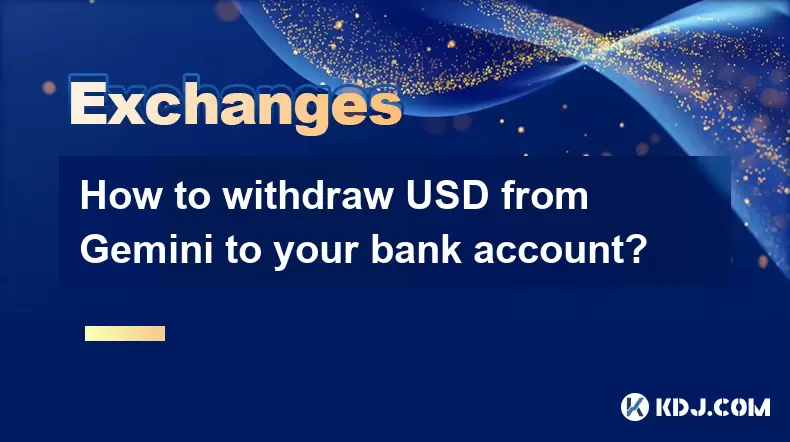-
 Bitcoin
Bitcoin $115200
0.84% -
 Ethereum
Ethereum $3716
6.14% -
 XRP
XRP $3.073
4.30% -
 Tether USDt
Tether USDt $1.000
0.01% -
 BNB
BNB $768.8
2.24% -
 Solana
Solana $169.2
4.51% -
 USDC
USDC $0.9999
0.02% -
 Dogecoin
Dogecoin $0.2106
5.86% -
 TRON
TRON $0.3330
1.66% -
 Cardano
Cardano $0.7550
3.93% -
 Hyperliquid
Hyperliquid $38.79
1.50% -
 Stellar
Stellar $0.4139
3.58% -
 Sui
Sui $3.592
4.32% -
 Chainlink
Chainlink $17.10
4.88% -
 Bitcoin Cash
Bitcoin Cash $575.7
5.78% -
 Hedera
Hedera $0.2505
0.85% -
 Avalanche
Avalanche $23.00
7.61% -
 Ethena USDe
Ethena USDe $1.001
-0.01% -
 Litecoin
Litecoin $121.3
9.72% -
 Toncoin
Toncoin $3.409
-4.39% -
 UNUS SED LEO
UNUS SED LEO $8.922
-0.47% -
 Shiba Inu
Shiba Inu $0.00001252
2.54% -
 Uniswap
Uniswap $9.935
8.62% -
 Polkadot
Polkadot $3.721
3.19% -
 Monero
Monero $305.9
0.61% -
 Dai
Dai $0.9998
-0.02% -
 Bitget Token
Bitget Token $4.389
1.41% -
 Cronos
Cronos $0.1401
7.61% -
 Pepe
Pepe $0.00001077
2.99% -
 Aave
Aave $268.1
3.05%
How to set Coinbase's account security key? Will multi-device login trigger risk control?
Coinbase enhances account security by requiring a hardware or software-based 2FA key, significantly reducing unauthorized access risks.
Jun 19, 2025 at 05:36 am

Understanding Coinbase's Account Security Key
When using Coinbase, one of the most important security features available to users is the account security key. This key serves as a form of two-factor authentication (2FA) and adds an extra layer of protection beyond just your password. The security key can be a hardware token or a software-based authenticator app like Google Authenticator, Authy, or Duo Mobile. Setting this up correctly ensures that even if someone gains access to your password, they won't be able to log into your account without also having access to your security key.
It's essential to understand that the security key is not the same as SMS-based 2FA, which is less secure due to vulnerabilities like SIM swapping. A security key—especially a hardware one such as a YubiKey—provides stronger cryptographic proof of ownership and significantly reduces the risk of unauthorized access.
Step-by-Step Guide to Setting Up Your Coinbase Security Key
Setting up your Coinbase account security key involves several precise steps:
- Log in to your Coinbase account through the official website.
- Navigate to the Security Settings section under your account preferences.
- Locate the Two-Factor Authentication (2FA) options and click on the Security Key section.
- Click Add a Security Key and follow the on-screen instructions.
- Insert your hardware security key into your computer’s USB port or NFC reader, depending on the model.
- Tap or press the button on your security key when prompted by Coinbase to complete registration.
- Make sure to save backup codes provided by Coinbase in a secure offline location. These will allow you to regain access to your account if your security key is lost or damaged.
Once completed, every time you log in from a new device or browser, you'll need to insert your security key and verify your identity. This process enhances your account security significantly compared to relying solely on passwords or SMS verification.
Multi-Device Login and Risk Control Mechanisms
A common concern among Coinbase users is whether logging in from multiple devices will trigger risk control measures. The short answer is: it depends. Coinbase employs advanced fraud detection systems that analyze login behavior, device fingerprints, IP geolocation, and other factors to detect suspicious activity.
If you frequently switch between devices—for example, using both a desktop and mobile app—Coinbase may flag these activities as potentially risky. However, regular use across trusted devices typically does not pose a problem. If you're logging in from a new or unrecognized device, especially from a different country or network, Coinbase may require additional verification steps, such as email confirmation or re-entering your 2FA code.
To minimize the chances of triggering risk controls, ensure that your trusted devices list is updated regularly. You can review and manage your trusted devices directly from your Coinbase security settings.
Best Practices for Managing Multiple Devices Securely
To avoid unnecessary risk control triggers while maintaining high security, consider the following best practices:
- Use a consistent network when accessing your Coinbase account from different devices. Frequent IP changes can raise red flags.
- Enable biometric authentication (fingerprint or face recognition) on your mobile device to add another trusted verification method.
- Avoid using public Wi-Fi networks to access your Coinbase account, as these can be flagged as insecure locations.
- Always log out properly after each session, especially when using shared or public computers.
- Regularly check your device activity log in Coinbase to monitor any unfamiliar sign-ins.
By following these steps, you can safely access your Coinbase account from multiple devices without unnecessarily triggering account security alerts.
Recovering Access After Losing Your Security Key
Losing your Coinbase security key can be stressful, but recovery is possible if you've taken the right precautions. Here’s what to do:
- If you saved your backup codes, use one to regain access to your account. Each backup code can only be used once.
- If you didn’t save backup codes, you’ll need to go through identity verification with Coinbase support. This process may take several days and requires submitting personal identification documents.
- If you're using a recovery key (for Coinbase Wallet), make sure it's stored securely and never shared with anyone.
- Once verified, you can remove the old security key and register a new one.
Always treat your security key and backup codes with the same level of care as you would your private keys or wallet seed phrases.
Frequently Asked Questions
What happens if I lose my Coinbase security key and don’t have backup codes?
If you lose your security key and don’t have backup codes, you must contact Coinbase support and go through an identity verification process. This usually involves submitting government-issued ID and answering account-related questions. It may take several business days to regain access.
Can I use more than one security key with my Coinbase account?
Yes, Coinbase allows you to register multiple security keys for redundancy. This is useful if you want to keep one key at home and another on your person, or if you want to share access with a trusted family member or partner.
Does Coinbase notify me when a new device logs into my account?
Yes, Coinbase sends email and in-app notifications whenever a new device or browser accesses your account. These alerts include details about the login location and time, helping you identify any unauthorized access attempts.
Is it safe to use third-party authenticator apps instead of a physical security key?
While third-party apps like Google Authenticator or Authy are convenient, they are generally less secure than hardware security keys. Software-based 2FA can be vulnerable to phishing, malware, or cloud backups being compromised. For maximum security, Coinbase recommends using a physical FIDO2-compliant security key.
Disclaimer:info@kdj.com
The information provided is not trading advice. kdj.com does not assume any responsibility for any investments made based on the information provided in this article. Cryptocurrencies are highly volatile and it is highly recommended that you invest with caution after thorough research!
If you believe that the content used on this website infringes your copyright, please contact us immediately (info@kdj.com) and we will delete it promptly.
- Cryptocurrency, Altcoins, and Profit Potential: Navigating the Wild West
- 2025-08-04 14:50:11
- Blue Gold & Crypto: Investing Disruption in Precious Metals
- 2025-08-04 14:30:11
- Japan, Metaplanet, and Bitcoin Acquisition: A New Era of Corporate Treasury?
- 2025-08-04 14:30:11
- Coinbase's Buy Rating & Bitcoin's Bold Future: A Canaccord Genuity Perspective
- 2025-08-04 14:50:11
- Coinbase's Buy Rating Maintained by Rosenblatt Securities: A Deep Dive
- 2025-08-04 14:55:11
- Cryptos, Strategic Choices, High Returns: Navigating the Meme Coin Mania
- 2025-08-04 14:55:11
Related knowledge

How to set and manage alerts on the Gemini app?
Aug 03,2025 at 11:00am
Understanding the Gemini App Alert SystemThe Gemini app offers users a powerful way to stay informed about their cryptocurrency holdings, price moveme...

How to use the Gemini mobile app to trade on the go?
Aug 04,2025 at 09:14am
Setting Up the Gemini Mobile AppTo begin trading on the go using the Gemini mobile app, the first step is installing the application on your smartphon...

What to do if you forgot your Gemini password?
Aug 04,2025 at 03:42am
Understanding the Role of Passwords in Gemini AccountsWhen using Gemini, a regulated cryptocurrency exchange platform, your password serves as one of ...

What are the websocket feeds available from the Gemini API?
Aug 03,2025 at 07:43pm
Overview of Gemini WebSocket FeedsThe Gemini API provides real-time market data through its WebSocket feeds, enabling developers and traders to receiv...

How to withdraw USD from Gemini to your bank account?
Aug 04,2025 at 11:01am
Understanding Gemini and USD WithdrawalsGemini is a regulated cryptocurrency exchange platform that allows users to buy, sell, trade, and store digita...

How to manage your portfolio on Gemini?
Aug 03,2025 at 10:36am
Accessing Your Gemini Portfolio DashboardTo begin managing your portfolio on Gemini, you must first log in to your account through the official websit...

How to set and manage alerts on the Gemini app?
Aug 03,2025 at 11:00am
Understanding the Gemini App Alert SystemThe Gemini app offers users a powerful way to stay informed about their cryptocurrency holdings, price moveme...

How to use the Gemini mobile app to trade on the go?
Aug 04,2025 at 09:14am
Setting Up the Gemini Mobile AppTo begin trading on the go using the Gemini mobile app, the first step is installing the application on your smartphon...

What to do if you forgot your Gemini password?
Aug 04,2025 at 03:42am
Understanding the Role of Passwords in Gemini AccountsWhen using Gemini, a regulated cryptocurrency exchange platform, your password serves as one of ...

What are the websocket feeds available from the Gemini API?
Aug 03,2025 at 07:43pm
Overview of Gemini WebSocket FeedsThe Gemini API provides real-time market data through its WebSocket feeds, enabling developers and traders to receiv...

How to withdraw USD from Gemini to your bank account?
Aug 04,2025 at 11:01am
Understanding Gemini and USD WithdrawalsGemini is a regulated cryptocurrency exchange platform that allows users to buy, sell, trade, and store digita...

How to manage your portfolio on Gemini?
Aug 03,2025 at 10:36am
Accessing Your Gemini Portfolio DashboardTo begin managing your portfolio on Gemini, you must first log in to your account through the official websit...
See all articles

























































































